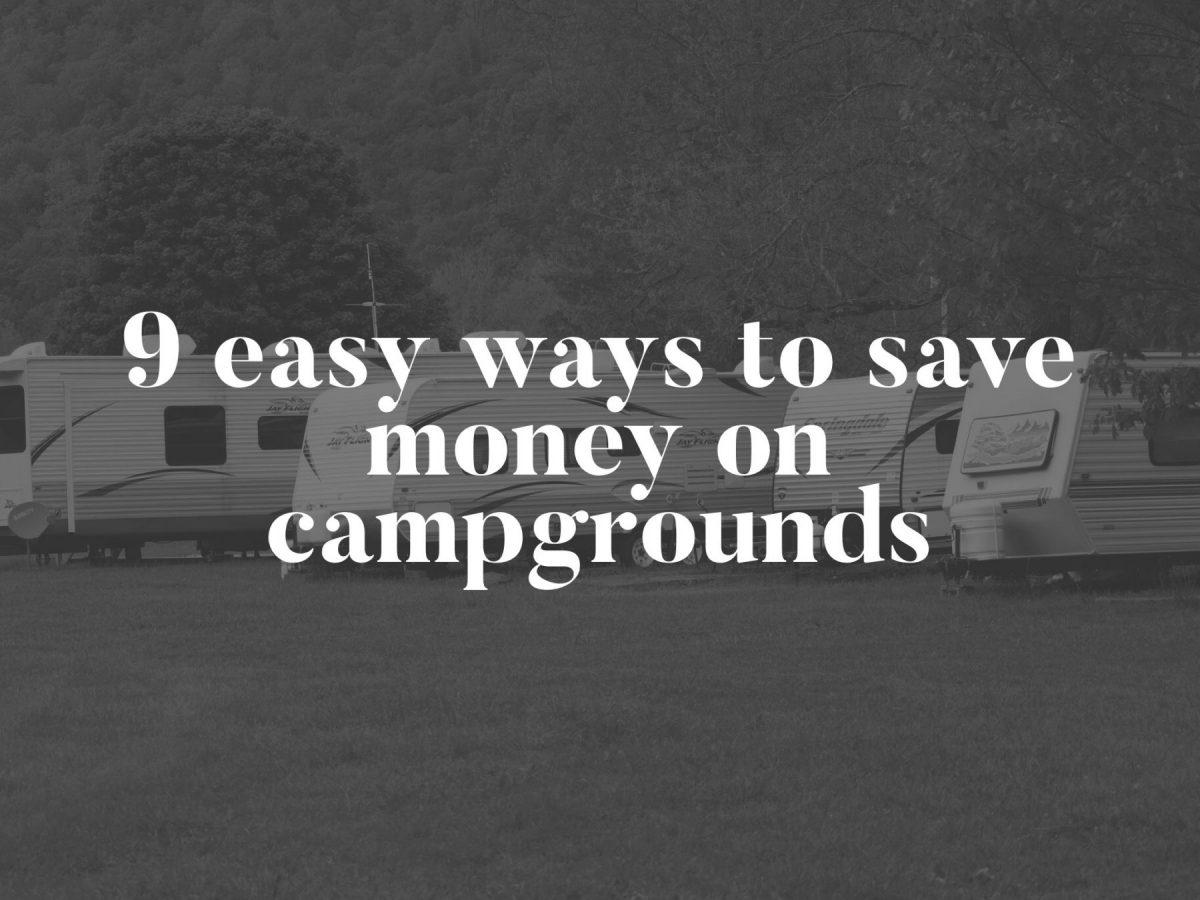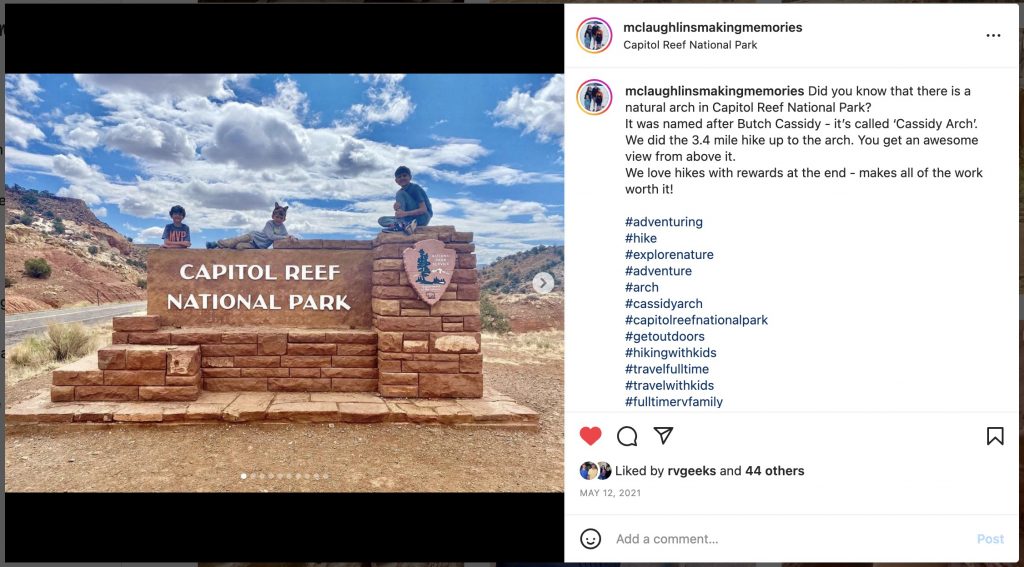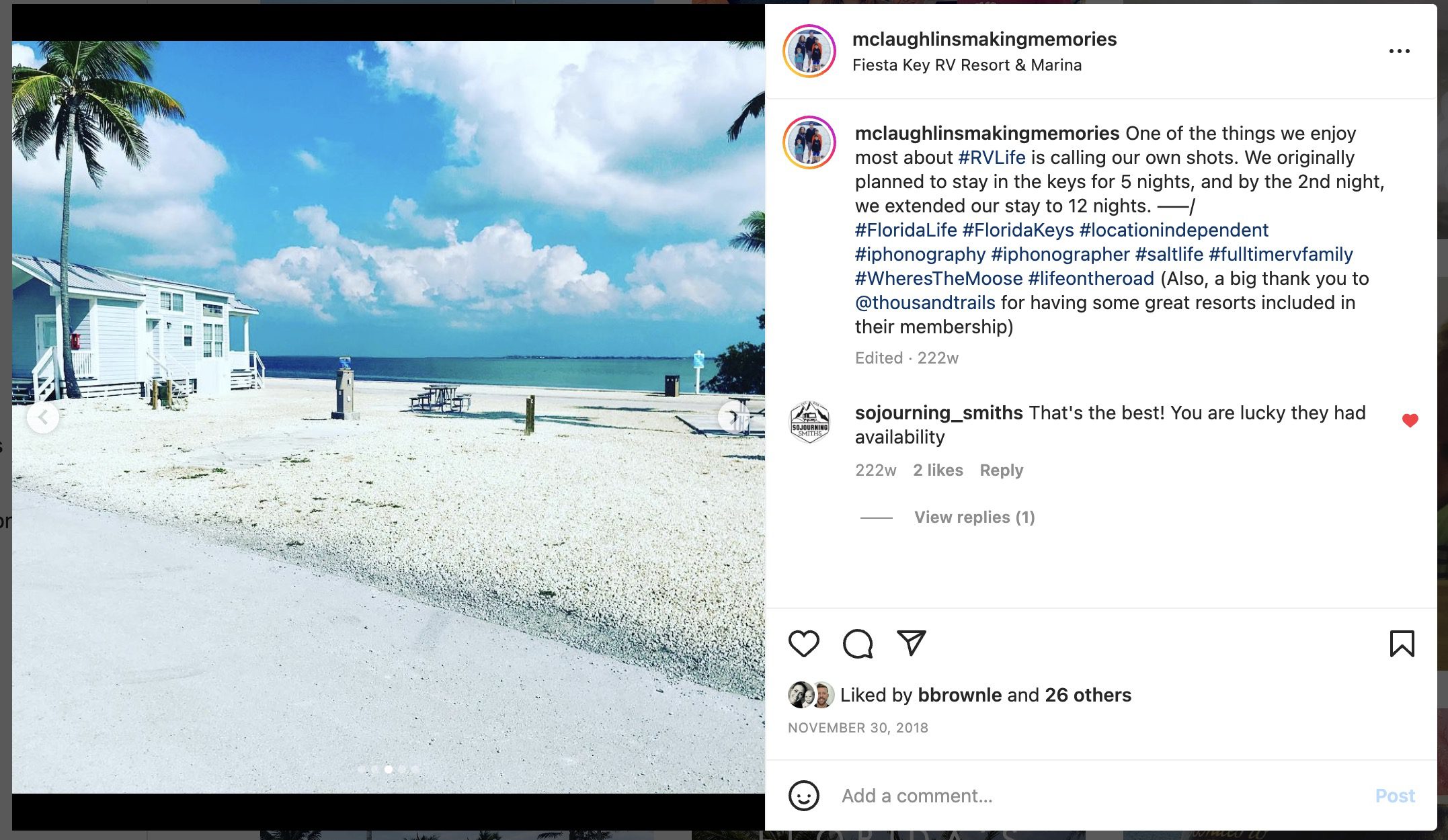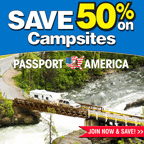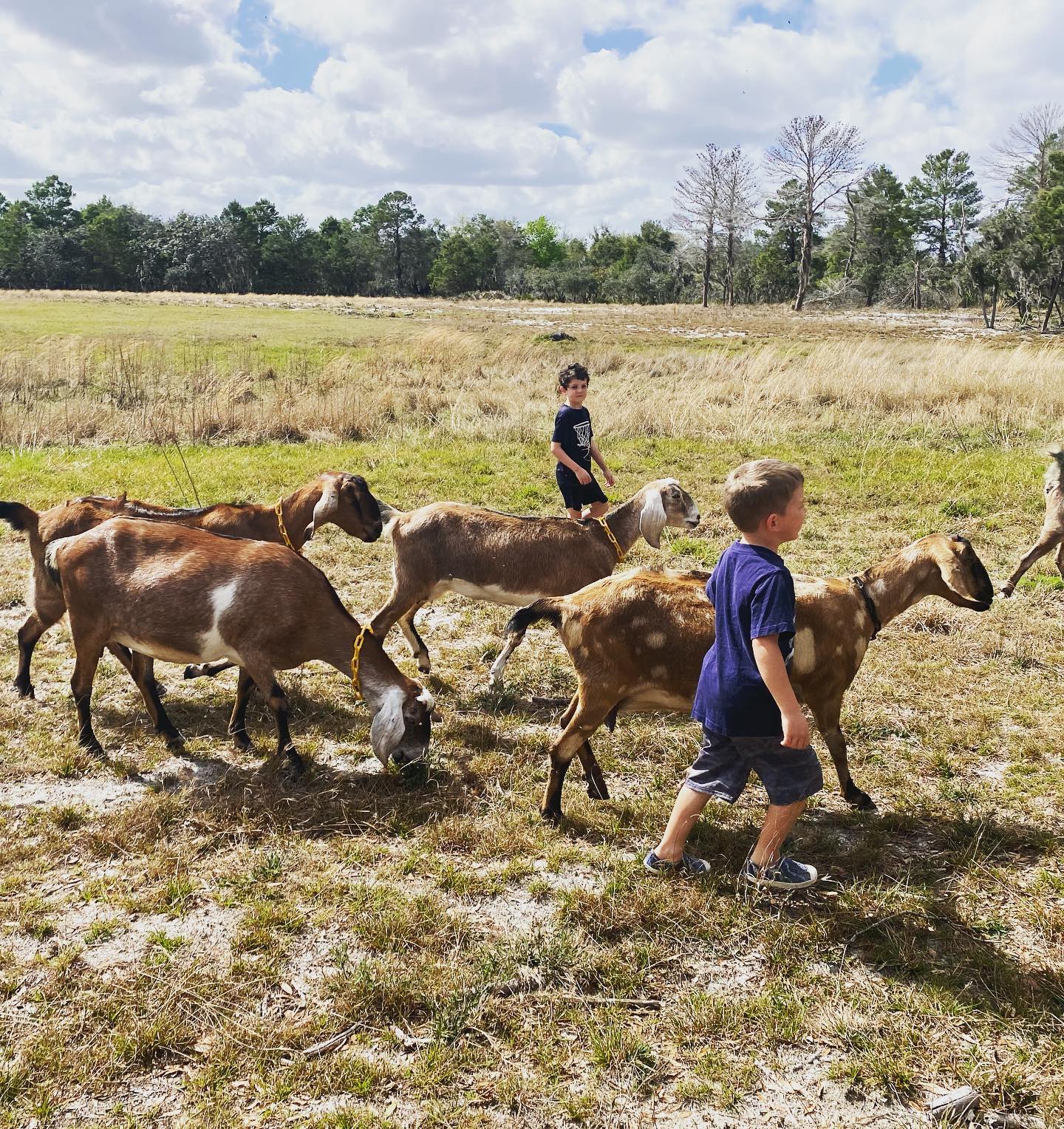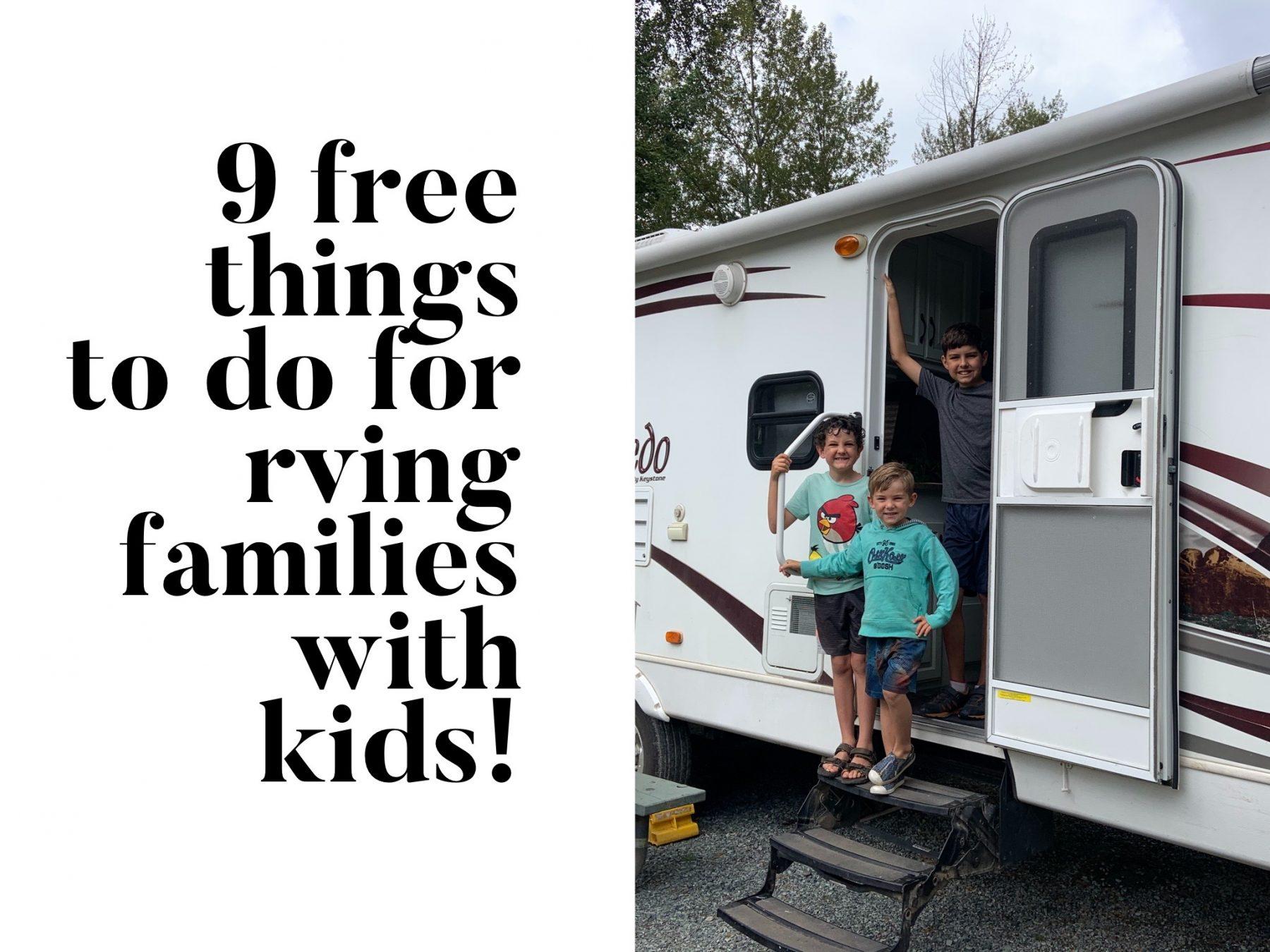Disclaimer: This article includes referral links to products and services we use. If you choose to make a purchase, we will receive a commission at no cost to you.
With three boys running around, hiking, biking, and expending energy, we’ve got to balance our budget between how much we spend at campgrounds, “invest” in groceries, and keep our boys busy with things to do since we are full-time RVers.
Ways To Save Money On Campgrounds And RV Parks
We’ve found some (and stayed in some) that are $80-$100/night – actually, we paid $20/night for 12 nights in the Florida Keys at a campground that usually costs $119/night… more about that later in the Thousand Trails section.
While Celine and I would probably sit around a campground, visit a beach, or go for a hike more often than not, our boys want to keep doing things, so one way we can reduce our expenses (and enjoy our RV instead of having to live out of sleeping bags) is by watching our campground costs.
Keeping these costs low allows us to pay that extra bit for activities to entertain our kids, splurge on treats like going out for ice cream, or buy some camping gear when we see a new gadget.
After being on the road for two years, we’ve found some handy tips to save money on camping. We should specify that when we say “camping” we’re talking about our 30-foot travel trailer – it’s not exactly roughing it or what you might think of as a typical “camping trip” but it is our full-time home on wheels.
“Camping” is one of those terms you learn to distinguish from “RVing” once you’re full-time. Here are 9 other terms that we WISH we had known when we started RVing.
In our first 6 months on the road (August 2018 – December 2018), we paid $2851 to campgrounds. For all 12 months of 2019, we paid $2801. Based on what we know about saving money on campgrounds, our expenses are about half of what they were.
There are a few tips that, when used together, can help you save money on your camping trips or your full-time RV life.
[UPDATE: Since this article was originally written, we’ve added solar panels and lithium batteries to our RV. While that’s a substantial investment upfront, it can be a cost-saving in the long run. Here’s more about installing solar panels on our RV.]
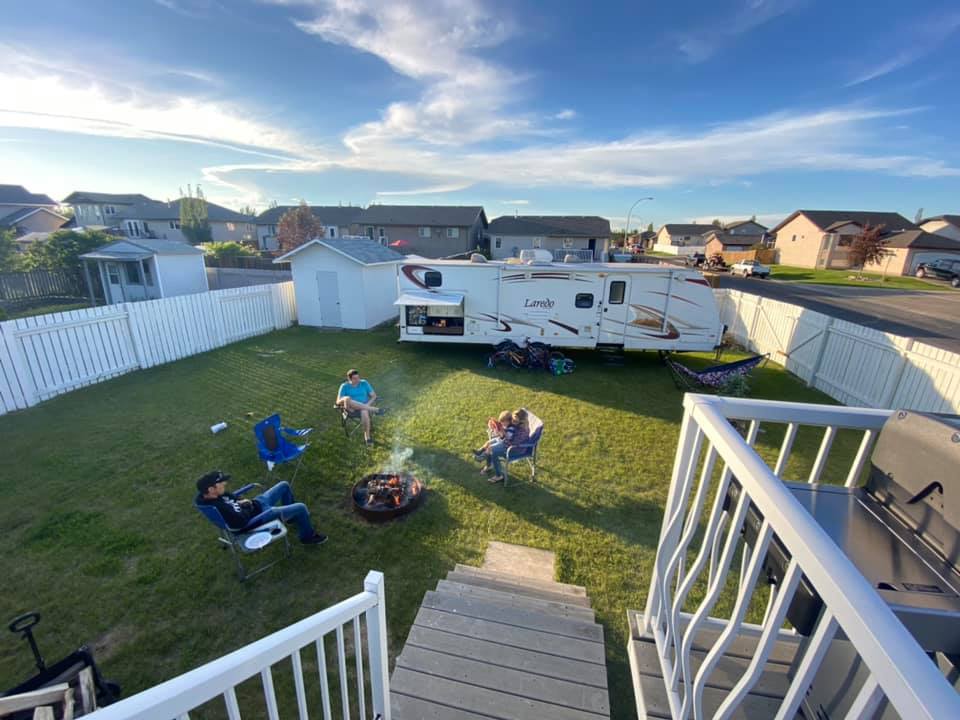
We couldn’t fit in the driveway, but we did slip into the backyard – a great way to save money on campgrounds
Obviously, if you’re a full-time RVer like we are, then you’ll have more opportunities to save money regularly than if you’re camping on weekends, so here are our best tips for whatever RV lifestyle you have:
Stay longer in one place to save on camping costs with nightly and weekly rates:
Typically, we move often – often, as in every 3 or 4 days. This is because when we first got on the road, we thought it would only be for a year, so we had a lot to see quickly. In light of that, we kept moving.
To put it in perspective, in the first three months, we had gone within Canada: Ontario, Quebec, New Brunswick, Nova Scotia, Prince Edward Island, back through New Brunswick, south through New England, visited Washington, drove to Atlanta for a conference, visited friends in Alabama, west to Mississippi, north through Tenessee and then went to the east coast in South Carolina. It’s exhausting just writing that list, but we thought we only had a year.
Many campgrounds charge a discounted weekly rate (compared to their daily rate) and a further monthly discount.
For example, if you go camping for a night, the camping fees could be $40, but if you stay for the week, they charge $210 (or $30/night); if you stay for the month, they might charge $600 (or $20/night).
It depends on your goals, but if you want to save money or reduce costs, slow down and plan longer stays. Keep in mind that the daily and weekly rates usually include electricity, where as the monthly rates usually have electricity billed on top of that rate.
To reduce your air conditioning bill, here are 17 tips: How to keep your RV cool in the summer heat and you might be able to reduce your electricity costs even further with some of these 21 RV Life Hacks that we love.
Bonus points if you stay until the off-season rates kick in. Homeschooling RVers love sticking around until after the public school year starts.
This also will reduce the fuel costs of towing a trailer (since you won’t be towing as often) or your fuel costs of driving your motorhome if you drive around a passenger vehicle more during your longer stays.
Now that we know this, do we plan longer camping trips? Not really. We like to keep moving, and our boys are in that rhythm.
Learning to Back in Your Trailer, Fifth Wheel or Motorhome:
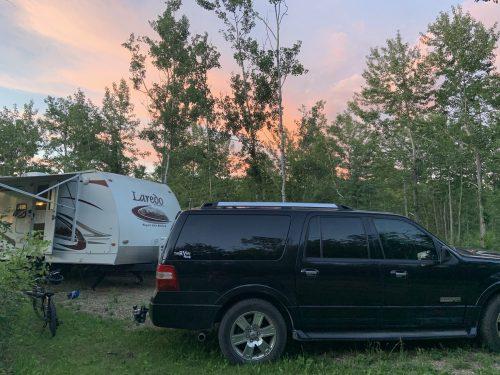
Save money by learning to back in your RV
Pull-through sites, while much easier to get in and out of, typically cost more per night. Sometimes that’s only $5/night, but it really only benefits you on the night you actually drive-in.
If you are camping for 5 nights, the only time you benefitted from the pull-through site was the day you pulled in, so you’re paying an extra $25 to benefit you for one day.
Sometimes there isn’t an option – sometimes the back-in sites only accommodate a smaller rig, or they don’t have proper hookups that you need, so the pull-through is the only option, but generally speaking, learning to back in can save you some money on almost every stop.
Save money by choosing a campsite without full hookups:
Are you only staying a few nights at the RV Park? The difference between Electric and Water and Full-hookup is simply the sewer connection.
If the campground has a dump station, and if you’ll be in and out quicker than your tanks will fill up, you can save a few bucks by not choosing a sewer site and stopping at the dump station (or sani-station) on your way out.
Get used to doing this anyway. Even if you’re willing to pay the premium, some RV Parks simply don’t have sewer connections, so everyone learns to use the dump station.
Camp a little further out of town or outside of the National Park:
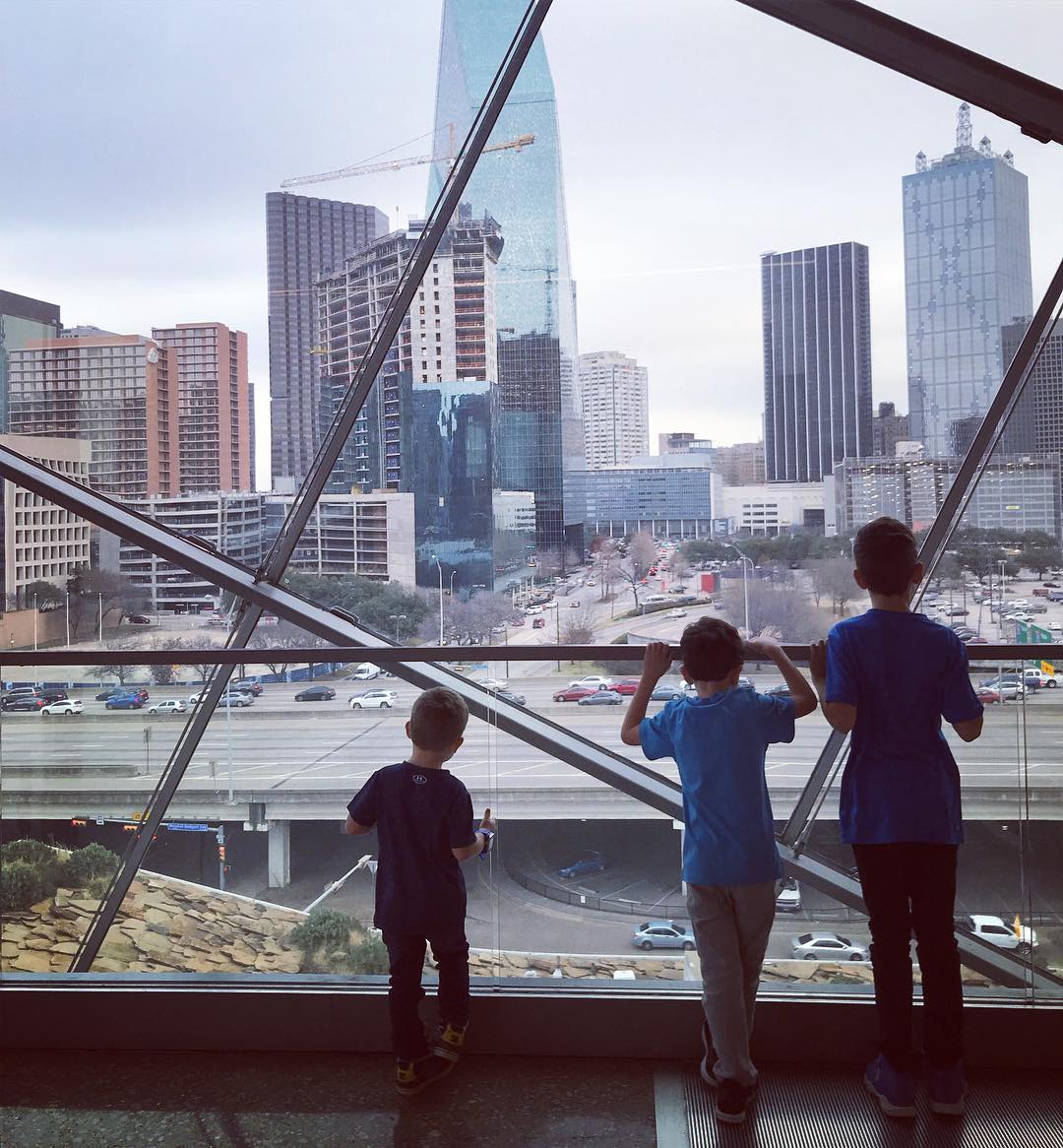
Save money on campgrounds by parking out of town
RV Parks with easy access to big cities are often more expensive because of the convenience. It’s great to be able to ride your bike as a family across that bridge and be downtown, or convenient to be a 1-block walk to the subway, but when it comes to your camping budget, going a little bit further can save that money for other things.
If you’re going to be camping near a city you want to visit, plan multiple activities on a single day when you go into the city, then take a day to sit and enjoy the campground rather than going into the city every day.
When camping in the city, you often can’t have fires within city limits, so in addition to being more expensive, city camping can put a damper on your camping experience.
National Forest and Park campgrounds provide easy access to the destinations within the parks or national forests, but come at a premium, often with restrictions (like a limited length or hard-sided RVs only) and sometimes without hookups.
We’ve seen campground prices go down by half in as little as a 15-minute drive further out of the city or National Park. There is sometimes even federal recreational lands, public lands, national wildlife refuges, or free camping on BLM land just outside the entrance to the park (Capitol Reef in Utah comes to mind where you can see the park’s welcome sign from the free BLM location).
It’s a small tip that may take a few more minutes of driving but can save you money in the long run.
Consider a Thousand Trails Membership:
Initially, we didn’t buy a Thousand Trails membership for 2 reasons:
1) We were traveling in Eastern Canada where there are no Thousand Trails parks.
2) We didn’t know how much we were going to be spending on campgrounds.
Thousand trails membership may seem expensive, but we chose their base-level membership with their encore resorts upgrade, and it worked out to about the same costs as we’d been paying for 1 month worth of camping at private campgrounds.
Our initial base package is $599/year, + $199/year for their encore resorts – this was when we were averaging about $800/month at campgrounds. We were on our way to Florida where almost all of the Thousand Trails parks are Encore resorts, so the add on made sense for us, and we found that it was helpful for the rest of our travels as well.
When you pay the membership fee, camping sites at most campgrounds are free to stay up to 14 days. They have 80 RV Parks in the US, and 1 in British Columbia, in Western Canada, just north of the Washington State border. A few premium sites, like in the Florida Keys, cost $20 (this is how we stayed at a great resort in the Fiesta Key Encore Resort that retails at $119/night for only $20/night.)
In the first year of our Thousand Trails membership, we stayed for free 80 nights, bringing out per-night costs down to $10/night while we were in their parks (and, we paid the $20/night premium for an additional 20 nights through the year).
Wait, Adam. If you can access free campgrounds with Thousand Trails, why only stay 80 nights in your first year?
With the base membership, there are some limitations (which of course, you can pay to upgrade). For instance, our membership only allows us to book 60 nights out, whereas other tiers will allow you to book much further out, so sometimes (but rarely) availability was an issue.
If you stay more than 4 nights in a campground, you have to stay out of the Thousand Trails system for a week. (but we went 3 nights back-to-back all the way up the West coast and camped for free for a month from San Diego to Washington State – again, this is perfect for our pace).
Because of this, we discovered another way to save money between camping at Thousand Trails.
Thousand Trails offers regular discounts and promotions. Click here to see their latest offer.
Buy a Passport America Membership:
I know these are supposed to be tips or suggestions, but you’ll thank me later. Passport America is a network of private campgrounds (unlike Thousand Trails) that gives you 50% off per night with your annual Passport America membership.
Since these campgrounds are privately owned, each one gets to set its own rules – some are not valid on weekends, not valid on holidays, or have a maximum of just a few nights, while others have a 3-night minimum.
While there are no park-to-park standards about the discount, the one common factor is that it’s 50% off. Between our stops at Thousand trails, because we’re staying out of their system, or we’re in an area that doesn’t have a Thousand Trails park – like most of Canada.
An annual Passport America, at $50/year will pay for itself in 2 or 3 nights.
Passport America isn’t always a surefire because of the individual park details, it is a great way to make sure your camping trip stays within budget – enough to splurge on boat rentals, to cover national park or state parks annual pass entrance fees, to rent gear for that once-in-a-lifetime hike. Our favorite Passport America find was in Mobile, Alabama at Chicksabogue Park where the $19/night camping fee is 50% off with Passport America with very few restrictions, so we stayed for $9.50/night with full hookups.
Our favorite Passport America find was in Mobile, Alabama at Chicksabogue Park where the $19/night camping fee is 50% off with Passport America with very few restrictions, so we stayed for $9.50/night with full hookups.
Sign up for Passport America here.
A Good Sam RV Club Membership
Similar to PA and usually has fewer restrictions but is only a discount of 10% per night with their annual fee – still helpful for saving money on your camping trip.
Save money by staying overnight at Walmart, Cabela’s, Bass Pro Shops, Cracker Barrel, or truck stops
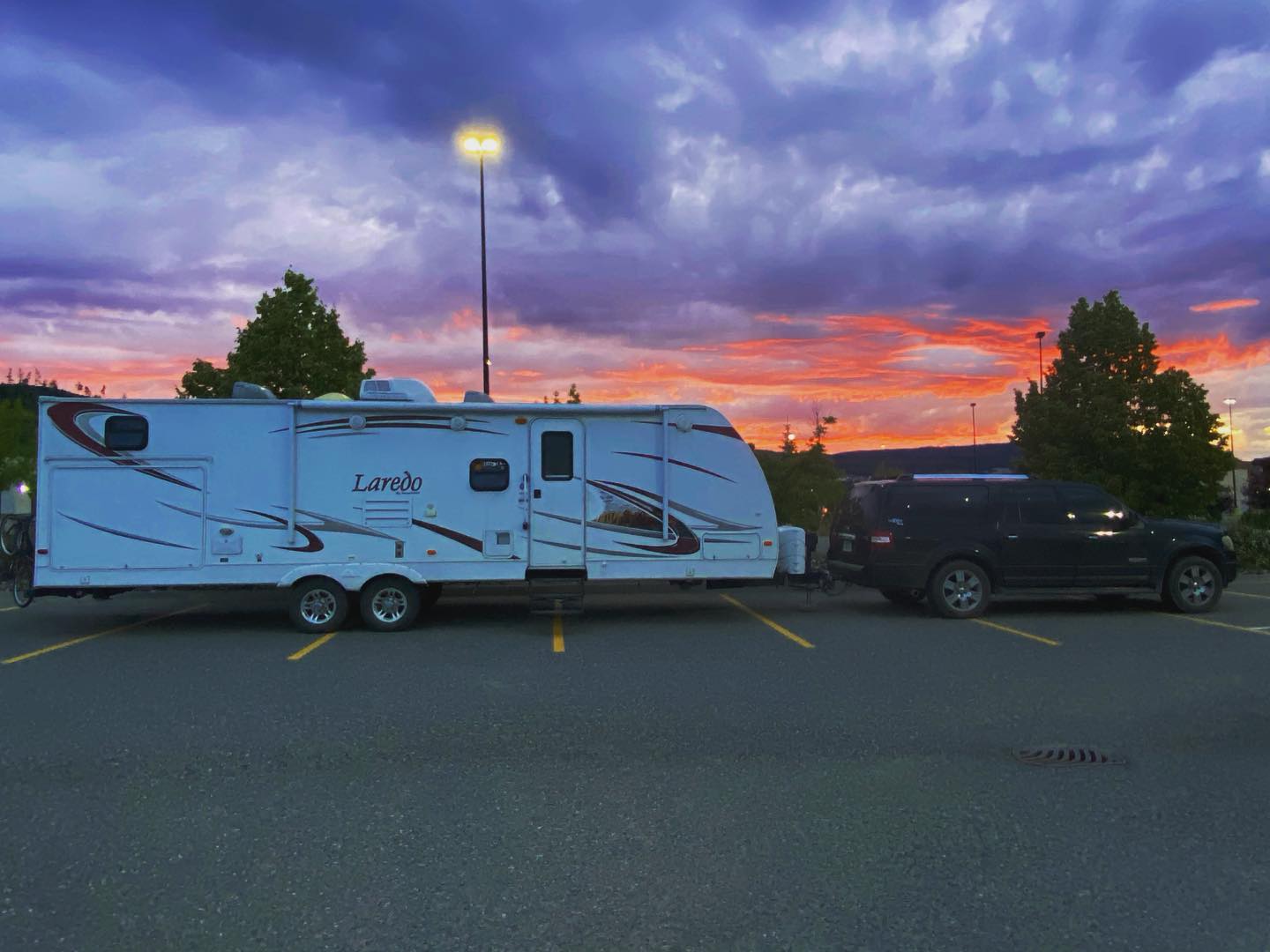
Not bad for a free RV site in a Walmart Parking Lot. Staying at walmart is a great way to save money on campgrounds for a quick overnight.
This shows up further down the list because of 2 reasons:
1) It’s not really camping – it’s just RV parking. Stopping at these locations are for the purpose of having a safe, well-lit place to pull over and sleep for the night.
2) You usually end up spending more than a campground just for RV parking!
Yeah, the $5 breakfast at Cracker Barrel, with the upgraded hashbrown casserole to add bacon, plus drinks for five people ends up costing us more than a campground, but it does mean that instead of paying a spot to park, we got breakfast.
If you just need to run in for a minute to check out the camping gear while you’re parked there, you’re probably coming out with $50 worth of ‘important gadgets’ you may never get to use.
Keep in mind that while these are great options if you’re on an overnight trip (ie. deciding to spend 12 hours driving from Boston to Atlanta overnight to be at a conference), there are no hookups, so you’ll want to figure out if your RV battery or propane fridge can sustain your groceries for an overnight stop without being hooked up, and limit the amount of time you try this.
While you’ll be saving money, it might not be worth enduring the heat in July with no A/C or fan or losing the food in your fridge because it spoiled as you were saving money five nights in a row.
Usually, we enjoy camping without hookups mostly in the spring and fall (or in the desert southwest in the winter) when the temperatures are perfect for camping on BLM land.

Rest Area with a picnic table for an overnight stop in Northern Ontario
This is great for an overnight stop now and then – we stay overnight at a Walmart once or twice a month, and usually a rest stop or truck stop once or twice – but avoid putting out your awning, setting up the grill, or putting down stabilizers.
Our general rule of thumb is to stay less than 12 hours.
Remember that this isn’t free camping – it’s not setting up your fire pit and enjoying the great outdoors or having a BBQ with friends in one of the National Parks. This is simply a functional place to stay overnight and should be treated that way.
Before staying in any ‘public’ parking lot, be sure to check with the store manager and find out if there are any local ordinances not allowing it. Other RV owners have told us it’s not much fun to be woken up in the middle of the night and told to start driving and find another spot to sleep.
You might also just want to stay a night, but if it’s getting colder outside, you’ll want these tips for staying warm in your RV.
Get a camping membership where you can stay for free at some cool locations (usually with no hookups aka Boondocking)
Again, like Walmart for instance, plan boondocking wisely (What is boondocking?) because the romanticism of a free night in an orchard without power needs to be taken with a grain of salt.
Memberships like Harvest Hosts or Boondockers Welcome allow you to stay at some really cool free locations like wineries, golf courses, hobby farms or museums (usually with no hookups, but sometimes available for a fee), usually for just one night, but in some cases a few nights.
In return, spend approximately what you would spend for a campground at their store, taking a tour, or buying a ticket to their location.
Instead of paying for a campground, you’ll get an experience or something to take with you for your overnight fee – a block of cheese, a hand-made craft, or pictures and a fun memory all beat paying for a campsite.
Check out Boondockers Welcome Here.
Free Camping on BLM Land (in the US) or Crown Land (in Canada)
Prefer isolation and seclusion and being out in nature? BLM Land (Bureau of Land Management) in the US and Crown Land in Canada offer the great outdoors and some amazing options for camping off-grid.
Up until now, we’ve used these options for between sites – if we’re traveling from one place to another and need a stopover – since they’re much more enjoyable for us than a Walmart parking lot. If you have solar panels or a sufficient bank of batteries, then you can spend weeks or months camping in some of these locations for free.
Here are some of the best places to camp for free in southern California.
Having solar panels and lithium batteries allows us the freedom to be off-grid for many days at a time giving us not only financial savings from campgrounds but also the quality of life that we’d like while we’re off the grid exploring and camping in the wilderness.
Here’s our personal list of camping memberships we’ve used to save money camping and cut our accommodation expenses in half:
- Thousand Trails Base-Level Membership + Encore Resorts Add On
- Passport America
- Harvest Hosts
- Boondockers Welcome
And here’s the post if you’d like more information about free camping on BLM land!
BONUS RVLIFE TIP: Petsitting and Housesitting!
You might think that petsitting and housesitting is just for young digital nomads traveling overseas, but we’ve integrated housesitting into our RV life. Here’s why we love petsitting as part of our RV life.If you’d like to give it a try, check out our coupon code for Trusted House sitters
Ways To Save Money With Free Camping Activities
While you’re saving money on campgrounds, you might also be looking for ways to spend time with your family without breaking the bank. Here are some of our favorites:
- Walking trails
- The campground’s swimming pool (for adult campers too, but just kids!)
- Free access to clubhouses and games rooms
- Play Board games
- Set up a tent outside your RV for ‘real’ camping experience – camping gear, sleeping bags, and smores setup on RV campsites always create a sense of nostalgia. This is the RVers version of a living room pillow-fort pajama party.
- Ask your campground host of campground owner for local activities and recommendations – maybe a concert in the park or a weekend parade.
Off of the campground, you might find these ideas about 9 Free things to do with kids helpful!
Low-Cost Activities For Your Camping Trip
Not quite as great as free, but here are a few ways we’ve stretched out our family’s activity budget.
- Annual pass (to National Parks or State Parks, depending on the areas you’ll be traveling in – often 2 or 3 visits to a state park could justify an annual pass for all of the parks in that state.) This is also one of our recommended gifts for RVers.
- Check the location of National Forest Campgrounds – it’s often closer to the hike you want than staying outside the forest which means it’s a fuel saving to pay for the campground.
- Hardware stores, gander outdoors, or camping world discount section. The off-season often brings along discounts from that summer’s stock. An extra gadget or piece of camping gear might help you enjoy camping that little bit more. Maybe there’s a piece of rental gear, and having your own equipment could save that repeated rental fee in the long run. If nothing else, it’s a free afternoon of checking out camping items.
- Splurge for a lifetime pass to something you love – in the long run, this might be a really cost-effective option.
Have a tip we didn’t cover? Leave a comment so we can all learn together!

